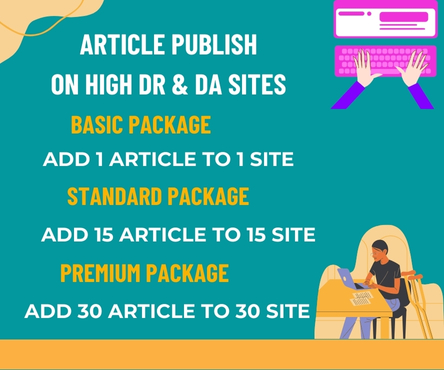In the rapidly evolving world of digital commerce, visibility is everything. You may have the most elegant website, a captivating brand, and products that solve real problems — but if your customers can’t find you online, your potential remains locked in shadows. That’s where the art of Search Engine Optimization eCommerce SEO Company steps in — not as a technical afterthought, but as a strategic masterpiece that brings clarity, reach, and results.
From Digital Silence to Strategic Symphony
Imagine launching a brilliant online store: responsive design, fast-loading pages, beautiful photography. Yet weeks pass with minimal traffic. Why? Because your digital storefront is akin to a boutique hidden in an alley no one walks down. SEO is the architectural blueprint that positions your eCommerce store on the main avenue of the internet — visible, attractive, and open for business 24/7.
SEO isn’t just about stuffing keywords or gaming algorithms; it’s about understanding your audience, speaking their language, and solving their problems in a way that search engines understand. It’s a blend of art and algorithm, content and code — a craft that, when mastered, unlocks exponential growth.
The Foundation: Understanding How Search Works
At its core, SEO is about relevance and authority. Search engines like Google aim to deliver the most relevant answers to a user’s query. They crawl billions of pages, analyze signals like keywords, links, mobile-friendliness, page speed, and user experience — all to determine what content deserves to rank.
For eCommerce businesses, this means every product page, every description, every blog article, and every category must be designed with both humans and search engines in mind. It’s about crafting a seamless journey — from discovery to checkout — that feels intuitive to the shopper and easy to index for the bot.
Keywords: The Language of Discovery
Keywords are not just search terms; they’re the heartbeat of online curiosity. A skilled SEO strategist knows that customers don’t search for “shoes”; they search for “affordable vegan leather sneakers” or “white running shoes for flat feet.” These long-tail keywords reflect intent — the kind of intent that converts into sales.
Effective eCommerce SEO requires meticulous keyword research — understanding what your audience is looking for and tailoring your content accordingly. From product titles to meta descriptions, from FAQs to blog posts, every word should be deliberate, helpful, and aligned with user intent.
On-Page Optimization: Crafting Pages That Work
A beautifully optimized product page is a harmony of form and function. Titles should be clear and contain primary keywords. Descriptions must inform and engage, incorporating semantic variations naturally. Images need alt tags — not just for accessibility, but for search indexing. Internal links should guide users logically through related products and content, reducing bounce rates and increasing time on site.
The technical side matters too. Fast load times, mobile responsiveness, structured data (schema markup), and clean URLs all play a crucial role. Google’s algorithm favors pages that offer a superior user experience — because what’s good for the user is good for business.
Content Marketing: Beyond the Product Page
While product listings are essential, they often aren’t enough to dominate search rankings. That’s where content marketing enters the picture. Blogging, guides, videos, tutorials, and customer stories provide the contextual depth that search engines love. They also build trust with your audience and help position your brand as an authority.
For example, if you sell fitness equipment, writing a detailed guide on “How to Set Up a Home Gym in a Small Apartment” could attract thousands of potential customers searching for exactly that. And within that guide, you subtly introduce your products, creating a natural and helpful bridge between information and commerce.
Off-Page SEO: Building Digital Credibility
Off-page SEO is the digital equivalent of word-of-mouth. It’s about backlinks — links from other reputable websites to yours. In the eyes of search engines, backlinks act as votes of confidence. The more high-quality backlinks you earn, the more credible and authoritative your site becomes.
Earning backlinks requires strategic outreach, guest posting, PR, and influencer partnerships. It’s not about manipulation; it’s about creating content and products so valuable that others want to reference and share them. Social signals, while not direct ranking factors, amplify your reach and can lead to more organic backlinks.
Analytics and Adaptation: The Invisible Engine
SEO isn’t a one-time setup — it’s a living system that evolves with your customers, competition, and search algorithms. Tools like Google Analytics, Search Console, and third-party platforms like SEMrush or Ahrefs provide insight into what’s working and what’s not.
Are users dropping off at a certain point in your sales funnel? Are specific keywords driving unqualified traffic? Is your bounce rate unusually high on mobile devices? These metrics are more than numbers — they’re clues that guide your strategy toward higher visibility and better results.
The Payoff: Visibility That Converts
When done right, SEO doesn’t just increase traffic — it brings qualified traffic. Visitors who arrive via search are often more intentional, more informed, and more ready to buy. That makes SEO one of the highest ROI investments for any eCommerce business.
And unlike paid ads, which vanish the moment you stop spending, SEO is cumulative. A well-ranked page can generate revenue for months or even years with minimal maintenance. It’s digital equity — a foundation that grows stronger with time.
Conclusion: Visibility as a Competitive Art
In the crowded bazaar of eCommerce, SEO is not a luxury — it’s a necessity. But it’s also an art — one that combines creativity with data, empathy with engineering. The businesses that thrive are those that treat SEO not as a checklist, but as a philosophy woven into every pixel and paragraph.
To unlock your store’s true potential, don’t just build it and hope they’ll come. Optimize it — and lead them there. Visibility, after all, is the first step to victory.

